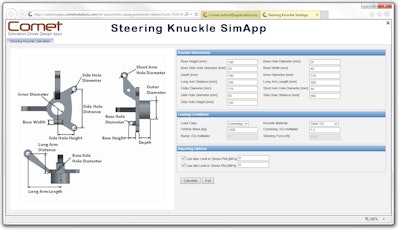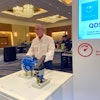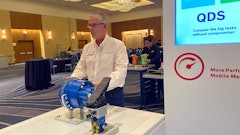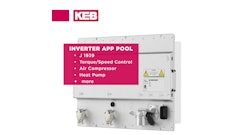
Suppose that in order to drive a car you were required to be an expert in the dynamics, principles and physics involved in exactly how a collection of parts interact to propel you down the road? The overwhelming majority of us would be walking. While this may appear to be an exaggerated example, one could argue that the manufacturing world has operated in this way for nearly 50 years.
The advent of CAE
Today’s product development environment employs intelligent Computer-Aided Design (CAD) models to drive new product development. This is certainly no great revelation; it’s been this way since the 1970s. About that same time the engineering world began to investigate ways to analyze these models in order to validate parts and sub-assemblies. The idea was to significantly reduce (or even eliminate) the number of physical prototypes that needed to be built and tested. Time and cost savings associated with validating designs early in the product development cycle are staggering.
The importance of this created a need that was quickly filled by engineers who would develop an expertise in the field. Software tools quickly emerged enabling these experts to put models into motion essentially replicating real-world movement, stress, strains, heat and failure. The process came to be known as “simulation.” OEMs throughout such industries as automotive, aerospace, construction and off-highway quickly embraced simulation and continued to invest in the tools and resources to support its use and on-going development.
The ability to apply advanced tools, techniques, expertise and experience is as much an art as it is a science. Consequently, there remains a relatively small fraternity of computer-aided engineering (CAE) experts - many themselves early pioneers, or direct disciples thereof. These are the custodians of a level of expertise and experience relied upon to perform key analysis.
The dilemma is twofold. Limited expert resources create unnecessarily long analysis processes that impose time constraints. This reduces the number of design alternatives that may be evaluated thereby stifling innovation. Second, as this generation exits the workforce there is concern that much of their knowledge will retire with them. The truth is that analysis/simulation is a critical competitive advantage for those who possess it.
What’s new: simulation applications
What if there was a way to capture and replicate this expertise? What if a way existed to embed such tangible knowledge and intangible judgement into a template extending capability throughout the product development team? The solution lies in Simulation Applications (SimApps), a new application software approach based not on custom programming but rather robust templates which can be easily built and modified.
Solution-specific SimApps are targeted, easy-to-use applications that drive complex simulation templates while speaking the language of the user/engineer. Project templates are generally set up by in-house analysis experts to replicate their expertise and company standards. This service may also be provided by third parties. Embedding expert knowledge and removing the complexity of general purpose CAE tools, SimApps allow product designers and engineers, without expertise in the use of simulation tools, to safely and quickly evaluate their designs using sophisticated simulations.
A SimApps library allows solutions to be built for virtually any industry or application. Various types of manufacturers are employing SimApps for development of drivelines, gearboxes, electronics reliability and electro-optic sensors, and leveraging simulation applications to globally enforce expert best practices while measurably increasing the impact of CAE investments on their business.
Extending analysis expertise is essential to innovation. The faster new designs can be analyzed the more alternatives that can be considered. Simulation informs quickly and with confidence which designs to reject and why without the need for expensive and time-consuming physical tests. Yet innovation is unnecessarily held back given the expertise and experience necessary to perform CAE today. SimApps unleash innovation through the insights of a broader group of designers and engineers.
Local responsiveness and global collaboration
Imagine what is possible with quick access information derived from this expert analysis. Think about how this new level of responsiveness changes the game. SimApps deliver the full power of simulation to everyone who needs it, from a salesman who needs to understand the feasibility and cost of a design that meets customer requirements, to a systems engineer who wishes to accurately compare the relative tradeoffs of various architectures, to design engineers who need accurate and rapid assessments of the change in performance of a design variation, to a junior engineer who is still learning the intricacies of CAE codes.
Today, like never before, product development hinges on collaboration. Leveraging the SimApp approach allows companies to work with disperse departments, suppliers and partners, and be confident that they will maintain control, that standards will be enforced, consistency will be maintained and the results of the analysis will be valid.
While this may be a difficult cultural shift for many organizations, it delivers tremendous benefits for cost of product development and innovation. As an example, American Axle Manufacturing reports the following major benefits from SimApps for automated NVH analysis of driveline systems:
- average 75% time reduction for each analysis iteration,
- approximately $130,000 in annual cost savings at a single engineering site,
- improved quality through globally enforced standards and practices which remove human error,
- ability to run many more analysis iterations, leading to more design decisions, earlier,
- ability to redeploy resources as less experienced engineers are now able to safely run simulations.
Empowering the team
Simulation has been the exclusive domain of too few for too long. It’s time to put to rest the notion that simulation cannot be safely used unless you have deep expertise in the art of extracting reasonable results from today’s simulation software. The confluence of simulation methodologies, software, automation templates and accessible computing hardware, aided by the advent of mobile devices with ubiquitous high-bandwidth access to the Internet, has the potential to magnify the number of users of simulation by an order of magnitude, over the next decade. The results are more innovative products, less engineering rework and lower product development costs.
Dan Meyer is President & CEO of Comet Solutions. Comet Solutions develops and implements next generation product performance simulation technology and services to support innovative and reliable products.


















